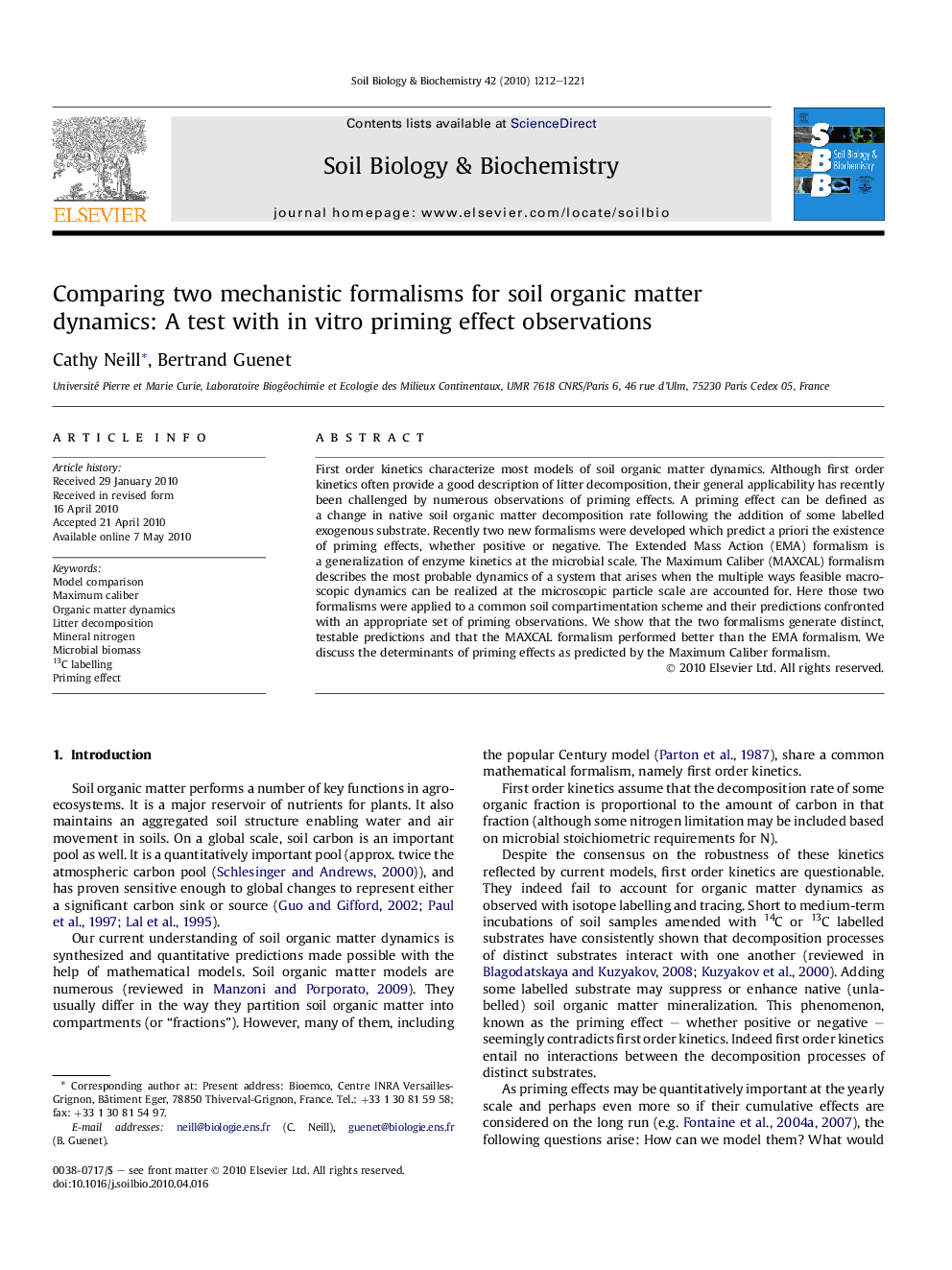| Article ID | Journal | Published Year | Pages | File Type |
|---|---|---|---|---|
| 2026090 | Soil Biology and Biochemistry | 2010 | 10 Pages |
First order kinetics characterize most models of soil organic matter dynamics. Although first order kinetics often provide a good description of litter decomposition, their general applicability has recently been challenged by numerous observations of priming effects. A priming effect can be defined as a change in native soil organic matter decomposition rate following the addition of some labelled exogenous substrate. Recently two new formalisms were developed which predict a priori the existence of priming effects, whether positive or negative. The Extended Mass Action (EMA) formalism is a generalization of enzyme kinetics at the microbial scale. The Maximum Caliber (MAXCAL) formalism describes the most probable dynamics of a system that arises when the multiple ways feasible macroscopic dynamics can be realized at the microscopic particle scale are accounted for. Here those two formalisms were applied to a common soil compartimentation scheme and their predictions confronted with an appropriate set of priming observations. We show that the two formalisms generate distinct, testable predictions and that the MAXCAL formalism performed better than the EMA formalism. We discuss the determinants of priming effects as predicted by the Maximum Caliber formalism.
